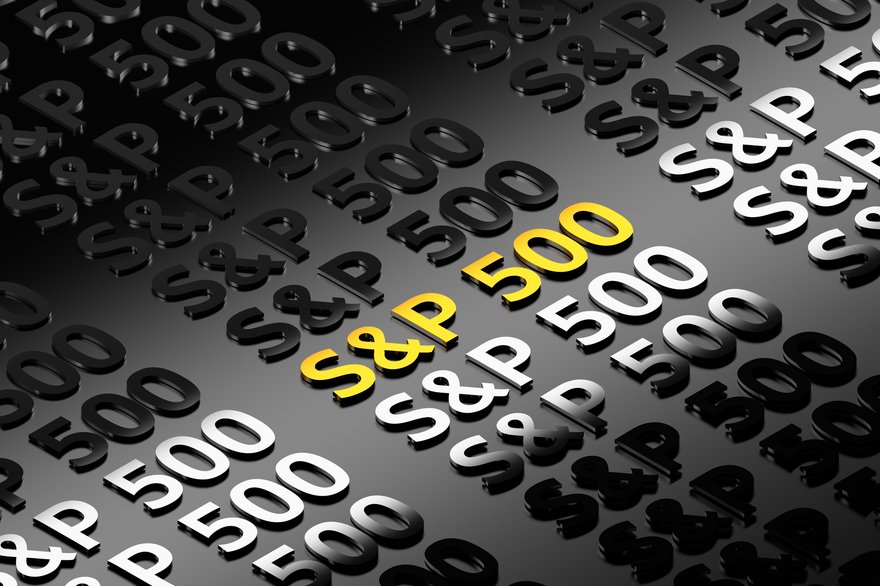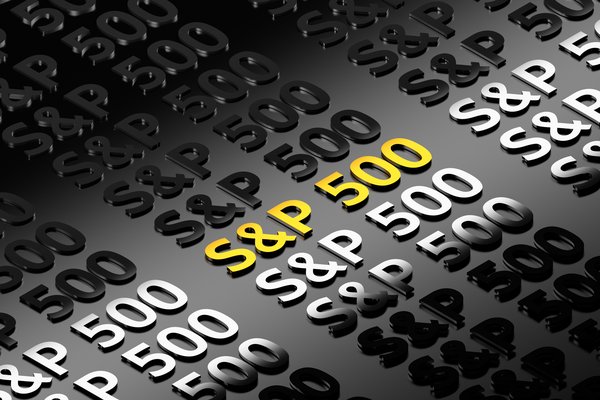Exchange-traded funds (ETFs) can be a great way to get started investing. These diversified funds are also ideal for laying a foundation for a long-term investment portfolio. However, with thousands of ETFs to choose from, selecting one can be a daunting task.
Exchange-Traded Fund (ETF)
That's where an S&P 500 ETF can be handy. Investors worldwide are familiar with the S&P 500 Index, which is often used as a benchmark for stock market performance. It's also possible to invest in an ETF that closely tracks the performance of this highly regarded index.

| ETF Name | Annual Fee | Assets Under Management | Description |
|---|---|---|---|
| SPDR S&P 500 ETF Trust (NYSEMKT:SPY) | 0.0945% | $427 billion | The first ETF in the U.S. and largest ETF by assets managed |
| iShares Core S&P 500 ETF (NYSEMKT:IVV) | 0.03% | $373 billion | An ETF managed by one of the largest asset managers around |
| Vanguard S&P 500 ETF (NYSEMKT:VOO) | 0.03% | $319 billion | Low-cost S&P 500 ETF option from a pioneer in the retail investing industry |
| ProShares Short S&P500 (NYSEMKT:SH) | 0.89% | $1.87 billion | A fund designed to profit from betting against the S&P 500 |
| Proshares Ultra S&P 500 (NYSEMKT:SSO) | 0.89% | $3.78 billion | A fund designed to provide double the daily return of the S&P 500 |
Assets Under Management (AUM)
Investing in SP 500 ETFs
Investing in S&P 500 ETFs
There are a number of advantages to investing in an S&P 500 ETF. The S&P 500 tracks the performance of 500 of the largest U.S.-based companies.
Although there are thousands of stocks listed on a U.S. stock exchange, many investors default to the S&P 500 when assessing the strength of U.S. stocks. That makes sense, given that more than 80% of the total U.S. stock market value comprises these 500 businesses.
Investing in the 500 companies that make up the S&P 500 can be a solid option, too. After all, it takes time and a powerful business to make it on this list of top corporations. Although not all of the S&P 500 companies are problem-free, there are many high-quality stocks within the index.
As of this writing, top stocks in this index run the gamut from big tech companies, such as Microsoft (MSFT 1.65%), Apple (AAPL 0.64%), and Amazon (AMZN 1.3%), to Warren Buffett's industrial conglomerate Berkshire Hathaway (BRK.A -0.34%)(BRK.B -0.01%) and top healthcare companies, such as UnitedHealth Group (UNH -1.03%) and Johnson & Johnson (JNJ 0.29%).
With that in mind, here are five top ETFs that track the performance of the S&P 500 Index.
1. SPDR SP 500 ETF Trust
1. SPDR S&P 500 ETF Trust
The SPDR S&P 500 ETF from State Street Global Advisors was the first ETF to be listed in the U.S. The fund has been available since 1993. Paired with the S&P 500 Index's popularity, this has made the SPDR S&P 500 ETF the largest exchange-traded fund around, with $427 billion in investor funds under management in late 2023.
The SPDR S&P 500 ETF tracks the performance of the S&P 500 Index, less the annual fee, and distributes dividends paid by the companies in the index. The ETF charges 0.0945% per year in annual fees. For every $1,000 invested, that works out to just under $0.95 per year subtracted from the fund's performance.
2. iShares Core SP 500 ETF
2. iShares Core S&P 500 ETF
The iShares Core S&P 500 ETF is another long-tenured U.S. ETF that invests in the stocks of the S&P 500 Index. It offers an almost identical investing product to the SPDR offering, except that iShares' annual fee is even lower at just 0.03% per year.
The fund was launched in 2000 and had $373 billion in assets under management as of late 2023. iShares is the ETF division of massive investment manager BlackRock (BLK 0.86%), which collectively manages almost $10 trillion in global assets.
3. Vanguard SP 500 ETF
3. Vanguard S&P 500 ETF
Like the previous two ETFs, the Vanguard S&P 500 ETF is a simple way to invest in the companies of the S&P 500 Index. It also charges just 0.03% annually. The ETF version of this Vanguard fund has $319 billion in assets under management. The company also offers a mutual fund that tracks the S&P 500.
Vanguard’s founder, Jack Bogle, invented the passive index fund in the 1970s, which helped revolutionize access to investments for everyday retail investors.
4. ProShares Short SP500
4. ProShares Short S&P500
Unlike the previous ETFs, the ProShares Short S&P500 fund is a way to bet against the S&P 500 Index. An investor might want to profit by betting against an investment, as some investors did during the bear market of 2022.
The ProShares Short S&P500 aims to provide a return exactly the inverse of the S&P 500 Index's daily return. So, if the S&P 500 is up 1% on a given day, the ProShares fund will be down 1% (before fees, which total 0.89% on an annualized basis). If the S&P 500 is down 1%, the ProShares fund will be up 1% (before subtracting fees). ProShares can deliver this performance by utilizing derivatives contracts on the S&P 500 Index.
The fund might have a place in the portfolios of investors looking to hedge against what they expect to be a downturn in the market. However, remember that due to the use of derivatives contracts and the compounding effect of returns, the ProShares fund is designed only to reflect daily inverse returns of the S&P 500, not to be a buy-and-hold fund over extended periods. Fund performance will deviate from the exact inverse performance of the S&P 500.
Also, while designed to be a hedge in a bear market, this ETF will decline severely in value during a bull market. Investors should note this particular risk and understand the fund's function as a shorter-term hedge.
5. ProShares Ultra SP500
5. ProShares Ultra S&P500
The ProShares Ultra S&P500 fund is another offering that utilizes derivatives contracts to modify the returns of the S&P 500 Index. In this case, though, the fund seeks to double the return of the S&P 500 on a daily basis. For example, if the S&P 500 is up 1%, the fund seeks to provide a 2% return, less fund fees (0.89% on an annualized basis).
If investors are bullish on the S&P 500, they might utilize leverage to amplify returns -- or to get bigger returns while utilizing less cash. Keep in mind that this can be dangerous, though. If an investment bet doesn't work out, this leverage will amplify losses by just as much (or more) than it would amplify daily gains.
Additionally, ProShares discloses that its fund only seeks double the return of the S&P 500 on a daily basis. Returns will deviate from double the S&P 500 over extended periods. This fund is not designed to be a long-term buy-and-hold strategy.
Drawbacks to investing in SP 500 ETFs
Drawbacks to investing in the S&P 500
Investing in an S&P 500 ETF can lay a great foundation for an investment portfolio. It isn't necessarily the be-all and end-all of investing, though.
For one thing, the S&P 500 is a market cap-weighted index. That means the bigger a company is, the larger its share in the portfolio. For example, as of this writing, the top 10 stocks in the index make up almost 30% of an S&P 500 ETF's holdings. This makes for outsize exposure to just a few companies and means an S&P 500 ETF may not be as diversified as some investors think.
Related investing topics
Investors should also consider their long-term goals. Investing in stocks is one of the best ways to build wealth over time. However, investing solely in the S&P 500 may not be the best strategy for retirees in need of income. Incorporating other asset classes into the mix would be advisable.
On the other hand, younger investors with decades until they plan to tap into their investments may also want to invest outside of the S&P 500. For example, the S&P 500 is a large-cap stock index. That means it yields no exposure to smaller businesses, many of which are fast-growing and could be future leaders of the S&P 500.
Nevertheless, for investors looking for a quick way to get started in their investing journey, an S&P 500 ETF is a fantastic place to start.









